How to Use Your Own Router with AT&T Fiber?
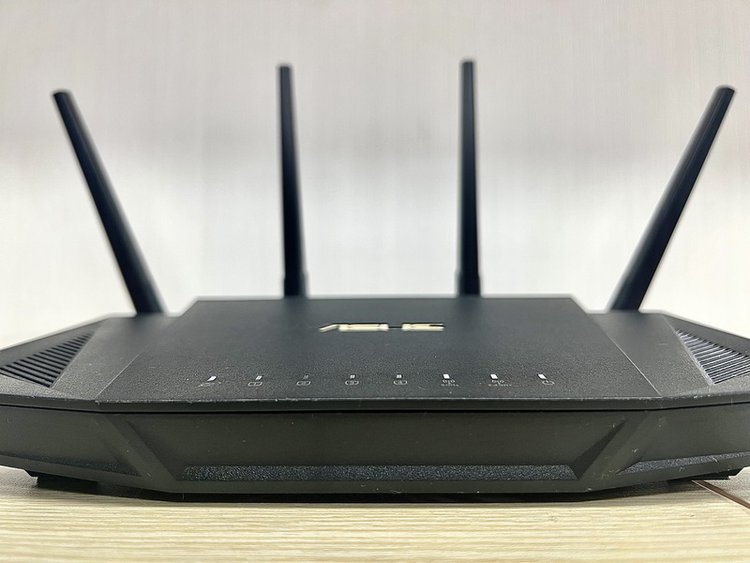
What To Know
- To use a personal router with AT&T, you’ll need to enable the ‘IP passthrough‘ feature, but be aware that enabling IP passthrough mode may affect certain security features and AT&T-specific functionalities.
- Before making any changes, it’s essential to consult with AT&T or your ISP to address any concerns or issues related to their provided equipment.
Many users prefer their own router over the standard ones provided by ISPs, like AT&T Fiber.
While ISP devices might not always offer the latest features, you’re not confined to them.
Find out how you can connect your preferred router to AT&T Fiber while still keeping essential components from their default kit. Let’s explore further!
Quick Navigation
Can I Use My Router with AT&T?
Yes, you can use your router with AT&T.
However, AT&T will still send you its equipment and charge a fee.
How does using another router with an AT&T connection work?
The router employs a feature called “IP passthrough,” passing AT&T’s gateway IP to your router and letting your router manage the network or home connection.
The AT&T Wi-Fi gateway device provides the internet connection. It connects your home to AT&T’s broadband network.
What is IP Passthrough? How Does It Work?
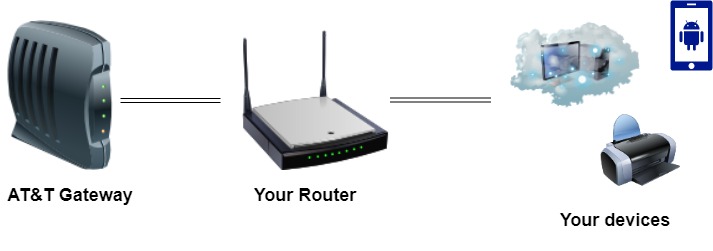
“IP passthrough” allows a router-connected device to receive the router’s public IP address instead of its private IP.
It basically disables your AT&T gateway’s router feature so that you can hook up a better router to the setup.
IP Passthrough Mode Disadvantages
IP passthrough has some drawbacks. Those are:
- Compromised security: The AT&T gateway features “firewall protection,” which prevents unauthorized users from accessing your network. Enabling the passthrough mode will take away the firewall net the AT&T gateway offers.
- Missing features: Certain AT&T-specific features in the company’s Smart Home Manager application may not work, such as ascertaining device weaknesses or default device passwords.
- No AT&T router page: If using your router, you cannot access the AT&T router page or IP address (192.168.1.254). To access the page, you must connect to the AT&T gateway again.
How to Enable IP Passthrough on Your AT&T Fiber?
Here are the steps to turn on passthrough with an AT&T fiber connection.
1. Note down your router’s MAC address. You can find the address underneath the router on a label or sticker.
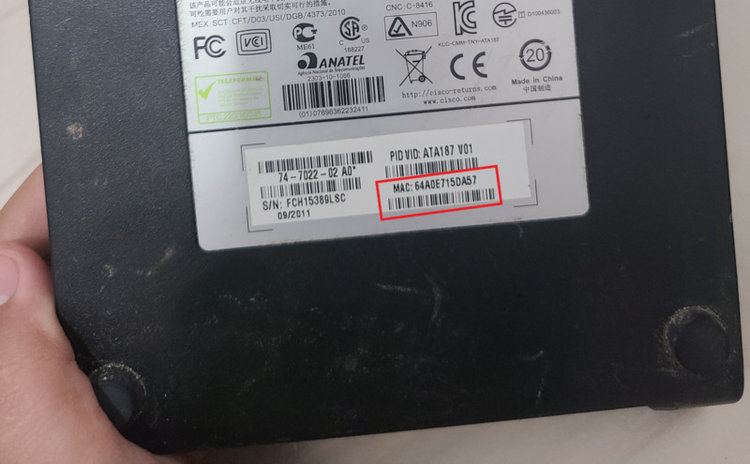
2. Plug the router into the AT&T gateway.
3. Open a web browser on a connected computer or smartphone. Type “192.168.1.254” in the address bar and hit the Enter key.
4. On the AT&T gateway page, click Firewall and then Firewall Advanced.
5. Enter the “Access code” to access the Firewall settings. You can find the code on the sticker on your AT&T gateway equipment.
6. Turn off or disable all Firewall settings and click the Save button.
7. Next, click on IP Passthrough under the same Firewall section and set the Allocation Mode to Passthrough. It should be Off by default.
8. Next, set the Passthrough Mode to DHCPS-fixed.
9. Choose your device (router) from the drop-down next to Passthrough Fixed MAC Address under Device List. If your router doesn’t show in the list, type its MAC address in the box below the Manual Entry heading. Click Save.
(Your router usually won’t show in the drop-down list if it’s not plugged in.)
10. Reboot the AT&T gateway by unplugging the device or using the Restart device option on the page. Head to Device > Restart device > Restart.
After restarting the AT&T gateway, disconnect all your devices from the gateway and connect them to your router. Turn off your AT&T gateway’s Wi-Fi to avoid confusion.
If you’d like to revert to the original settings, turn off Passthrough in Allocation Mode and set it to Off again.
Also, note that your AT&T router is not entirely out of the picture. You’ll still have to use it with your router, which will function as the gateway and forward traffic to your router.
Why Use Your Router?
People don’t opt to use their router for kick’s sake or just to be able to use their equipment. There are certain tangible benefits to taking that route.
Enhanced Internet Speed and Control
Old AT&T Gateway equipment may be unable to handle faster fiber internet speeds. The latest and greatest router you use will likely have more powerful hardware, extracting better performance from your internet connection.
Better Features
Using a third-party router, such as this TP-Link AC1750 (Archer A7) , also means access to more features and functions that the AT&T-provided device may not have.
For instance, the router will likely have an accompanying app that eliminates the need to type in the router’s IP address each time you want access to the router’s settings.
Then, there’s Wi-Fi 6 support, ushering in improved wireless internet performance, high speed during network congestion, improved security, etc.
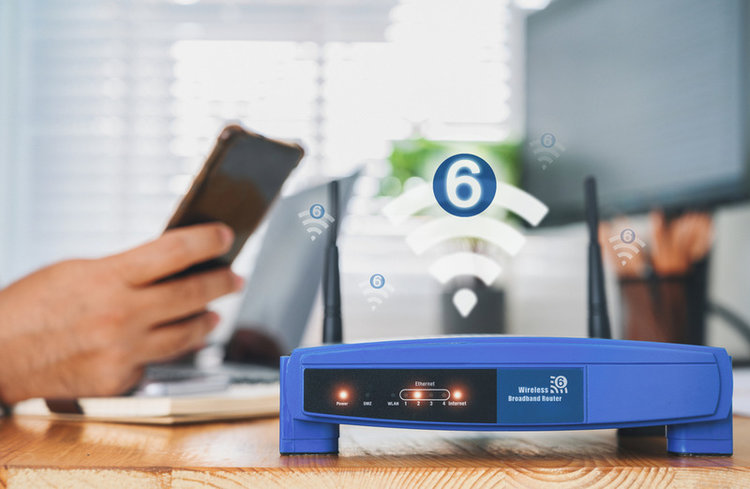
QoS (Quality of Service) helps extract maximum use out of the internet by prioritizing particular high-performance applications. It incorporates technologies that ensure the performance of vital tasks even with limited internet network capacity.
Security Features
Built-in VPN, parental control features, etc., are some of the essential security features of modern routers. Outdated AT&T gateways could render your home network susceptible to hacking, malware, and other security threats.
The parental control function helps block inappropriate online content, restrict internet access during specific periods, set limits on daily internet consumption, etc.
A router with VPN (a virtual private network) functionality ensures an encrypted and secure connection. Not to mention, VPN has several other uses/benefits.
Greater Compatibility
Although AT&T gateways support various devices, they could encounter obstacles when connecting to devices of certain types or configurations.
For instance, specific streaming devices or gaming consoles could necessitate particular port configurations or settings that the AT&T gateway may not support. The router you pick up after much deliberation may not have such issues.
Again, AT&T gateways are not vestiges of the past. They are usually more capable than you assume. If you plan to buy a router just because you think your AT&T gateway is lacking, confirm the same.
If there’s a specific functionality or feature the gateway doesn’t support, talk to AT&T support before moving on.

Routers You Can Use with Your AT&T Connection
Besides the odd router linked above, a few other routers we recommend using with your AT&T home internet include the ASUS RT-AX3000 , RT-AX88U , and GT-AX11000 .
If you’d like other brands, check out the NETGEAR Nighthawk AX5400 (RAX50) and the No products found.. These routers offer all the latest Wi-Fi internet features, cover larger areas, incorporate all security functions, etc.
The routers are not identical, offer varied features, and pack in specific discrete capabilities. Choose one based on your requirement and, of course, your budget.
FAQs
Can You Save Money Using Your Router?
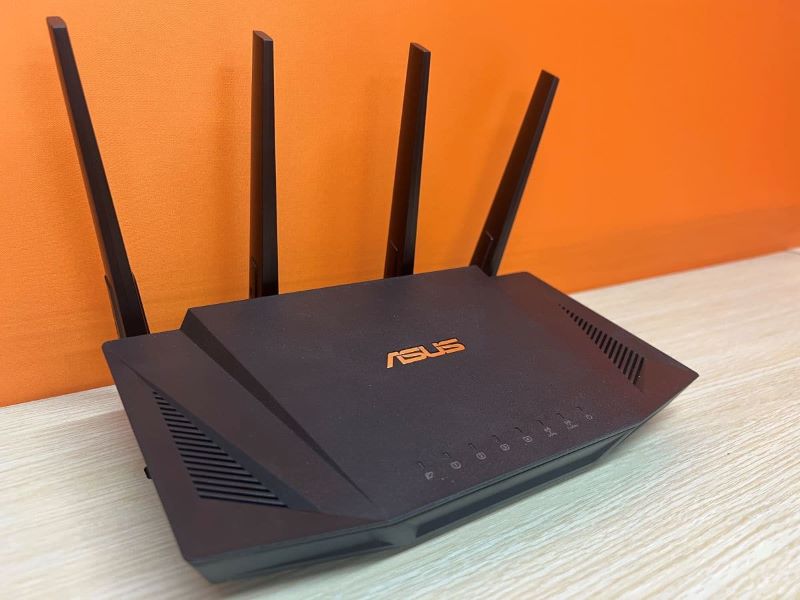
No, you cannot save money using your router. Your ISP, including AT&T, will typically require you to use their provided equipment and charge “equipment fees.”
The only way to save money on AT&T equipment is by opting for self-installation instead of asking an AT&T or some third-party professional to do it.
Will AT&T Stop Offering Support If I Use My Router?
No, AT&T won’t abandon you for using your router. Its support, however, will be limited.
The company will continue offering support for concerns relating to its network—for instance, issues with its internet or the equipment provided.
However, it won’t entertain concerns or look into matters relating to the third-party router, such as the device’s configuration or functionality.
If you experience problems with the router, refer to the product’s user manual or contact the router company’s customer support instead.
Do Other Home ISPs Allow Using a Third-Party Router?
Yes, pretty much all other ISPs (internet services providers) in the U.S. let their users use their router. The list of ISPs that offer the provision includes names like Spectrum, Xfinity, Verizon, T-Mobile, etc.

The companies could employ different technologies to enable the facility or have some considerations before they let you use another router.
Conclusion
When you sign up for a broadband connection, the service provider hooks you up with all the equipment needed to get rolling.
At first, the provision feels like a great convenience. However, as you start using the ISP-provided equipment, you feel stuck and wish the hardware performed better.
Luckily, you can supplant the device with your own. Although doing that is not as simple as plugging out and plugging in equipment, it’s also not a complex endeavor. Follow the instructions above to incorporate your router.
Ensure you pick up the right router for the job. With the sea of options, it’s easy to get confused and zero in on a sub-par device. The routers linked above are, no doubt, among the best.
Catherine Tramell has been covering technology as a freelance writer for over a decade. She has been writing for Pointer Clicker for over a year, further expanding her expertise as a tech columnist. Catherine likes spending time with her family and friends and her pastimes are reading books and news articles.

